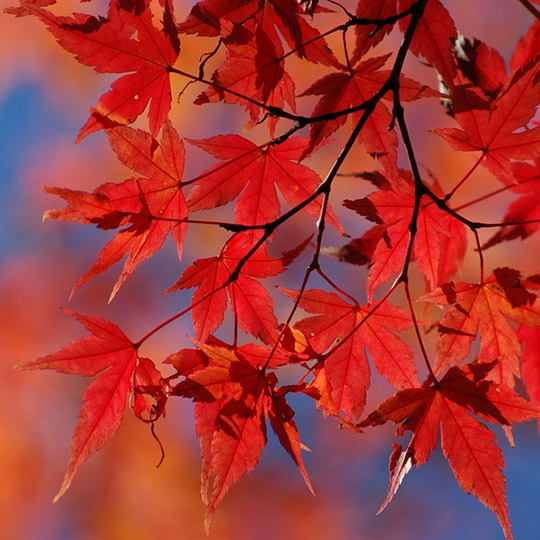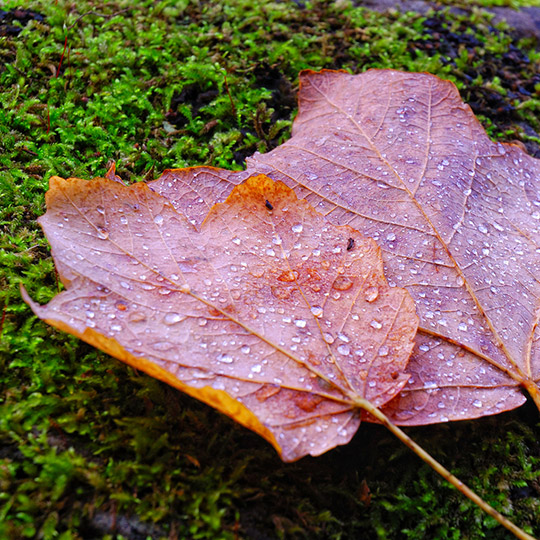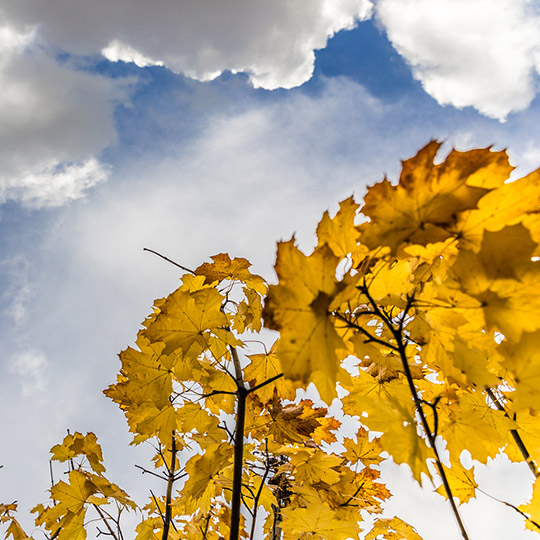Best Leaf Colors
The best leaf colors happen when there is a combination of: 1) a warm spring, with a good amount of rain, 2) a summer that is not too hot or dry, and 3) warm days and cool nights in the early fall. Click on the tabs to learn more about how weather can impact the colors of leaves.
Since carotenoids are present all year, the yellow and orange colors are not affected by changes in the weather. The amount of anthocyanin in the leaf is a response to changes in temperature. Warm, sunny days cause the leaf to increase sugar production. During cool nights, the veins close and prevent the release of the sugar, allowing it to build up and turn the leaf a bright red.

Source: felinda/Bigstock.com
The color of the leaves depends on the rain that falls during the growing season, since the amount of soil moisture impacts the health of the tree. Droughts can delay the fall colors by weeks and severe droughts can cause a short color season. A wet period in late summer and early fall can cause the color in the leaves to be less intense.

Source: fotola/Bigstock.com
A lack of wind will prolong the display the colors. During strong wind events, the weakened stems of the leaves can break easily and allow the leaves to fall before they have reached full color.

Source: Semmick Photo/Bigstock.com